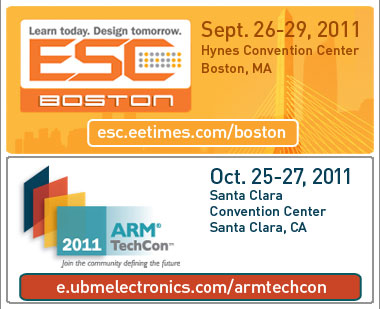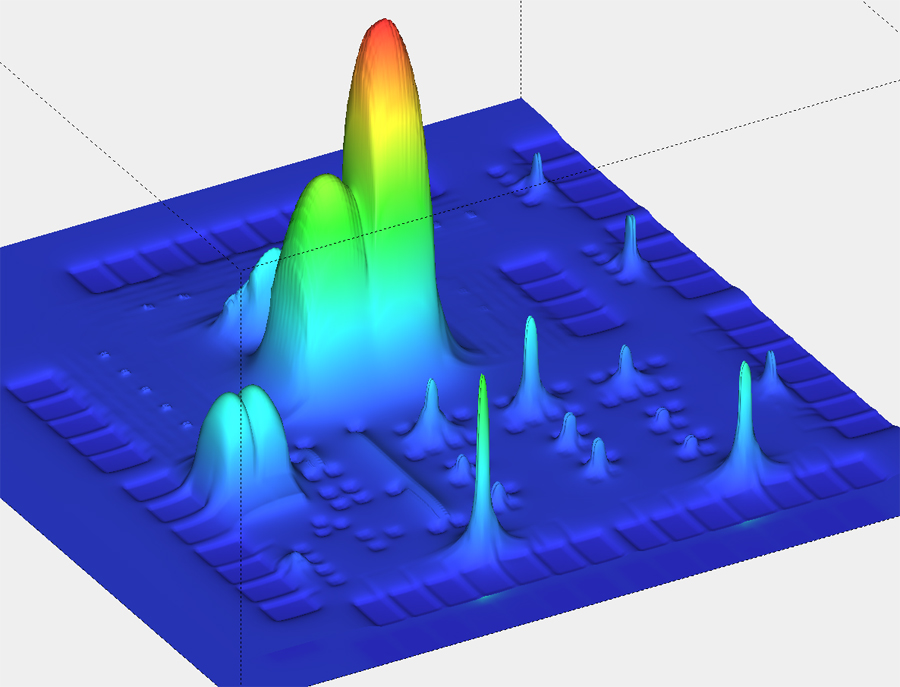What if I could save you 50% on your $1M annual budget of EDA tools, IT infrastructure and CAD group expenses? Would you be interested?
Today I had a briefing with Vishal Kapoor at Cadence to learn more about their SaaS story. Over the past 8 years the services group at Cadence has been working closely with EDA clients to help them better manage tools, flows and methologies in a secure way using networking. In September 2008 we learned that Cadence was offering SaaS. In May I wrote about SaaS and using Xuropa to evaluate new EDA tools.
When I first started thinking about SaaS for EDA the kind of tools that came to mind were batch-oriented for tasks like: DRC, OPC, LVS, P&R, logic synthesis, Logic verification, ATPG, regression testing, etc. However now that we have higher speed networking connections it is even becoming possible to perform interactive tasks like IC Layout and waveform viewing.
You’ll get the biggest cost savings by choosing an all-Cadence tool flow, although the services group will certainly integrate any tool that you’d like. You also get to decide the version of software that you want to design with.
Small IC design groups that don’t have any existing tools will quickly benefit from this SaaS approach although I can see that even the medium and global design teams should also consider outsourcing their design environment. Imagine signing a contract and being able to start your design team working in a day or so with tools that work together in proven IC design flow, without having to invest in your own IT and CAD groups.
My concerns about security, uptime and flexibility were all addressed by the SaaS offering at Cadence. I see this as a real innovation in how IC design can be done in the future, so my next question is, “When will Mentor, Synopsys and Magma follow the leadership of Cadence?”



“the services group will certainly integrate any tool that you’d like” may be a bigger obstacle than you think. Will Synopsys and other arch-competitors provide access to the tools at Cadence?
What if you want to use tools from 3-5 vendors — does some of the SaaS competitive advantage fade as it starts to look like a new customized flow?
John,
Yes, the more 3rd party tools that you want the more expensive the consulting engagement becomes.
The biggest advantage with SaaS from Cadence is when you use an all-Cadence tool flow.
SaaS isn’t for everyone, yet.
How to enable a multi-vendor SaaS flow? Under a Service-Oriented-Architecture (SOA) each EDA tool in the flow could be offered as a service, running on it’s own multi-node cluster to support high performance and scalability. The flow could be managed by the customer, using scripting of web-service APIs.
Jeremy,
Is there a sustainable business model to offer a multi-vendor SaaS flow with best-in-class tools?
Daniel – This is a very interesting model for engineering markets. What interests me is how the business model works in reality? How is the 50% saving achieved and how can existing users calculate that they will achieve those savings before they agree to switch over?
David,
EDA SaaS customers pay less annually for tools, and people (CAD group, IT department, integration, scripting). In the old days at Intel I was a circuit designer, however I used to spend days at a time writing my own scripts to improve the design automation of my group because our internal CAD group was too busy with their own projects to help me.
Hasnt this been tried before by both MGC and SNPS?
MGC had the DesignWide group, Synopsys had the distributed software flow. THere was a startup that crashed and burned out of portland based on this as well.. (blanking on the name)
With all the money woes of the CEOs at the big three, where they talk about getting more out of the IC design flow, why in reality do we think they will truely start a cheaper way to get the same results?
Scott, I agree that CDN is showing reduced revenue plans for 2009 compared to 2008, Magma is even more tenuous, Mentor seems to be treading water, and SNPS is the strongest financially. The only way for SaaS to work for the EDA companies is if the deals are all incremental, and would not have happened with the old pricing.
Daniel,
I want to follow up on David’s comment re. the business model. Can you share some details of the basic cost structure of CDS’ hosted solutions offerings? For instance do they have a $/CPU-hr approach for a customer that might want to offload DRC, LVS & OPC jobs to them or are they looking to roll services into every deal? For potential customers with existing licenses & compute infrastructure to be compelled by this I think there needs to be a easily understandable cost structure that will make the value propoition compelling to both engineering & finance.
Chris
Chris,
The only way to get a quote is from a Cadence account manager, or some anonymous Cadence user. For reasons of paranoia and security the folks at Cadence keep all pricing secret instead of just publishing it – I think that’s a marketing mistake.
Daniel
I agree. To build significant momentum around SaaS for EDA I think there needs to be open dialog around the economic model & pricing for different types of workload profiles.
Chris
Chris,
The smaller EDA companies publish clear pricing in their news releases and at their web sites (Altium, Tanner EDA, OrCAD, etc.), while the larger companies take an overly defensive position and cloak their pricing.
Pricing transparency is a virtue.
Daniel
Daniel,
I didn’t make DAC this year. Was there much talk of SaaS for EDA at the conference? If so what was the prevailing opinion?
Chris
Chris,
Some SaaS talk at DAC:
http://theasicguy.com/2009/08/16/dac-theme-3-increasing-clouds-over-sf-bay/
http://www.registerbits.com/dac-eda-times-a-changin
http://www.xuropa.com/blog/2009/07/23/xuropa-at-design-automation-conference/
http://www.meetup.com/SaaS-Electronic-Design-Meetup-Group/boards/thread/7191698/
Daniel